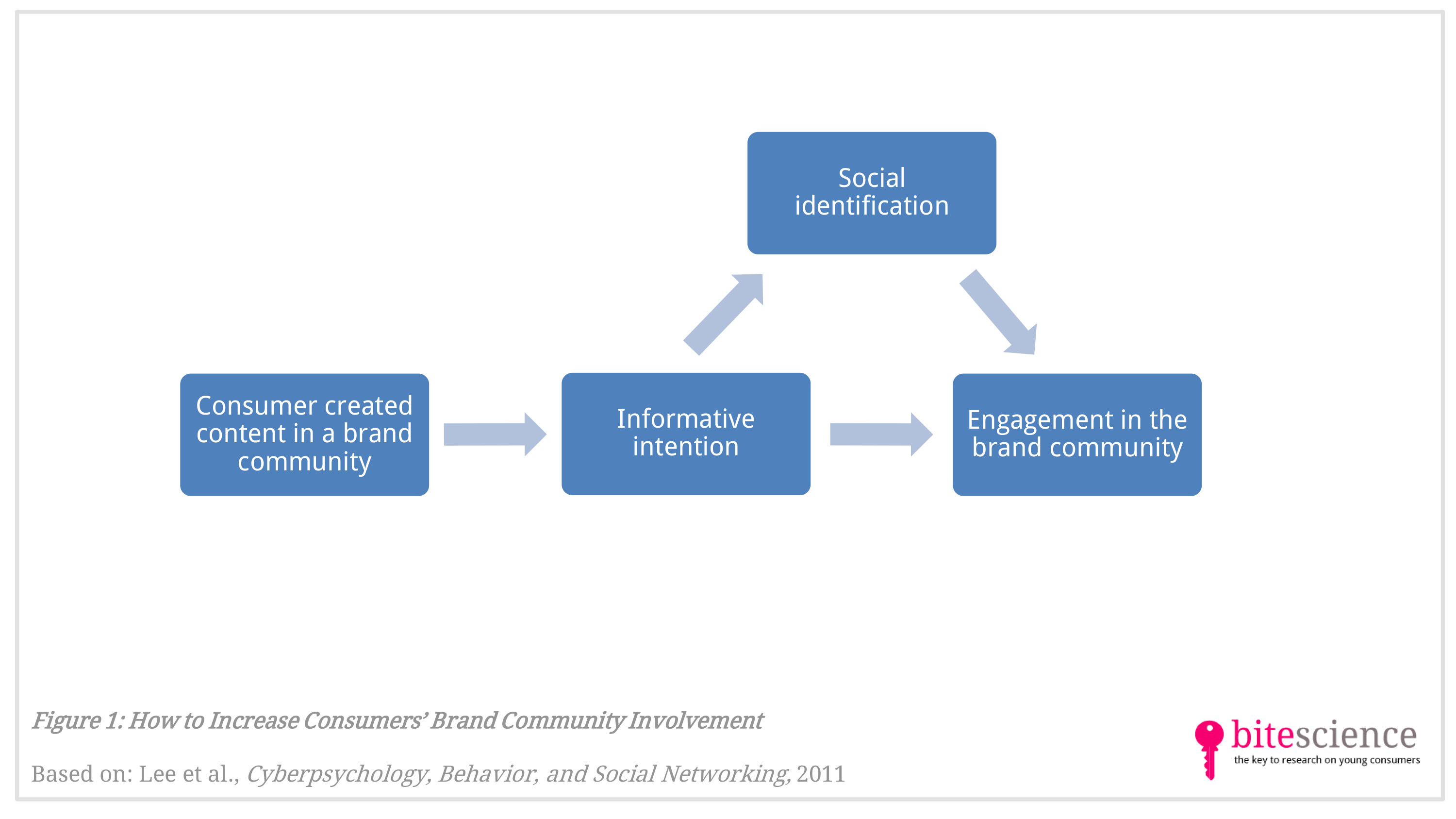
Increasing Consumers’ Brand Community Involvement: Give Them an Active Role in Creating Content
Brand communities are increasingly occurring on social network sites and are an important way to involve consumers with a brand or product. However, young adults are more likely to participate in online brand communities that are created by other consumers rather than communities created by a brand itself according to a study in Cyberpsychology, Behavior, and Social Networking.
Take aways
- Young adults perceive the intentions of brand communities created by other consumers as more positive (i.e., share information) than the intentions of communities created by brands themselves (i.e., persuade and make money).
- Therefore, they are more likely to participate in communities that are created by consumers compared to brands.
- So, to create brand community involvement, consumers should have an active role in creating content for brand communities, whereas marketers should have a passive role.
Study information
The question?
Does the way the online brand community is created (consumer-created vs. marketer-created) have an effect on consumers’ brand community engagement?
Who?
120 18- to 27-year olds (mean age: 20 years; 59.2% girls, 40.8% boys), mostly Caucasian (89.2%).
Where?
United States, southern university
How?
Four different brand communities were created for a fictitious digital camera brand. The brand communities differed in community type (created by either a consumer or by the brand itself) and community size (small—15 members and two discussion topics—versus large—9,993 members and 100 discussion topics). Participants were shown one of the four brand communities and were then asked to indicate how likely they were to participate in the brand community (e.g., share information, recommend the community to friends). They were also asked how much they identify themselves with the community and whether they think the intentions of the community are good.
Facts and findings
- Young adults are more likely to participate in brand communities that are created by other consumers compared to communities created by a brand itself.
- Young adults perceive the intentions of a brand community created by a consumer as positive (i.e., ‘other consumers share their knowledge so I can make a better decision’), which makes them feel more socially attached to the community and, therefore, more willing to participate.
- In contrast, they perceive the intentions of a brand community created by the brand itself as negative (i.e., ‘they want to persuade me to buy the brand in order to make money’), which makes them feel less socially attached to the community and, therefore, less willing to participate.
- Community size has no influence on the way young adults perceive and intend to participate in the brand community.
